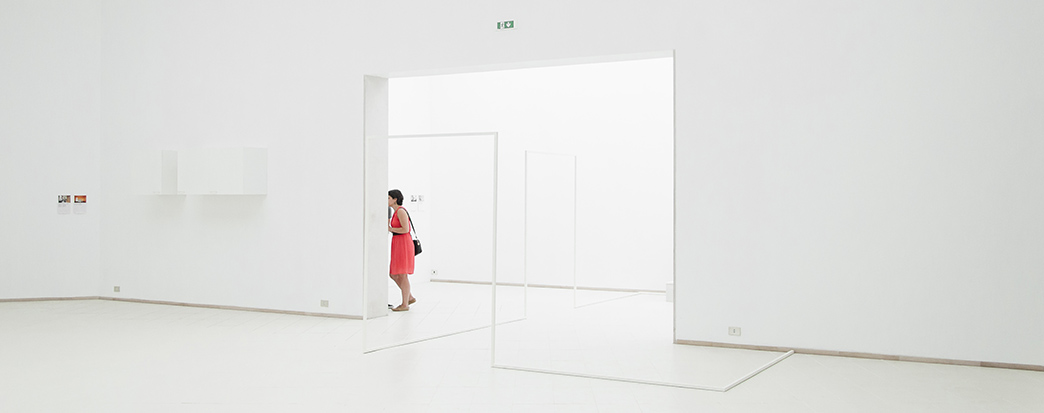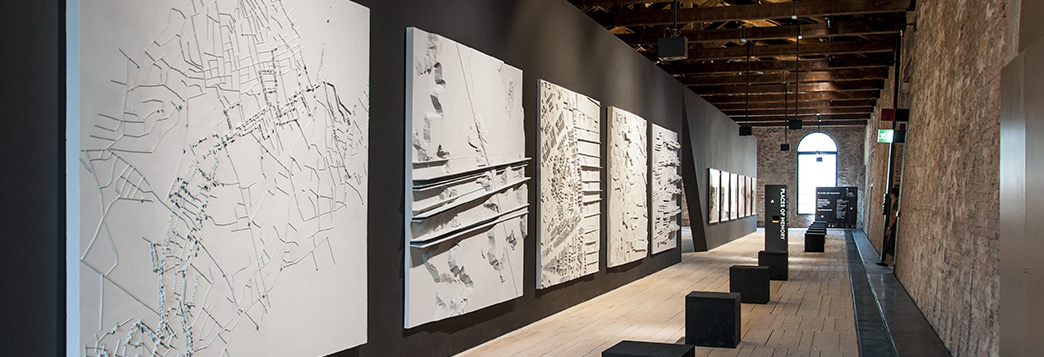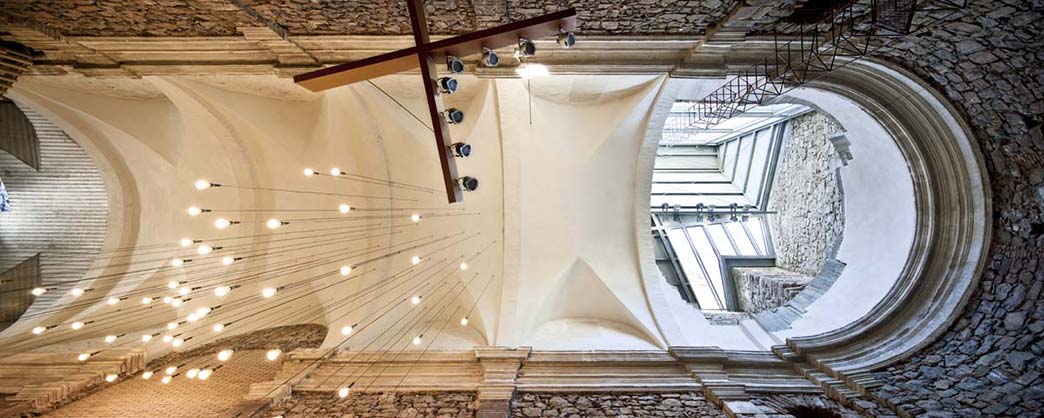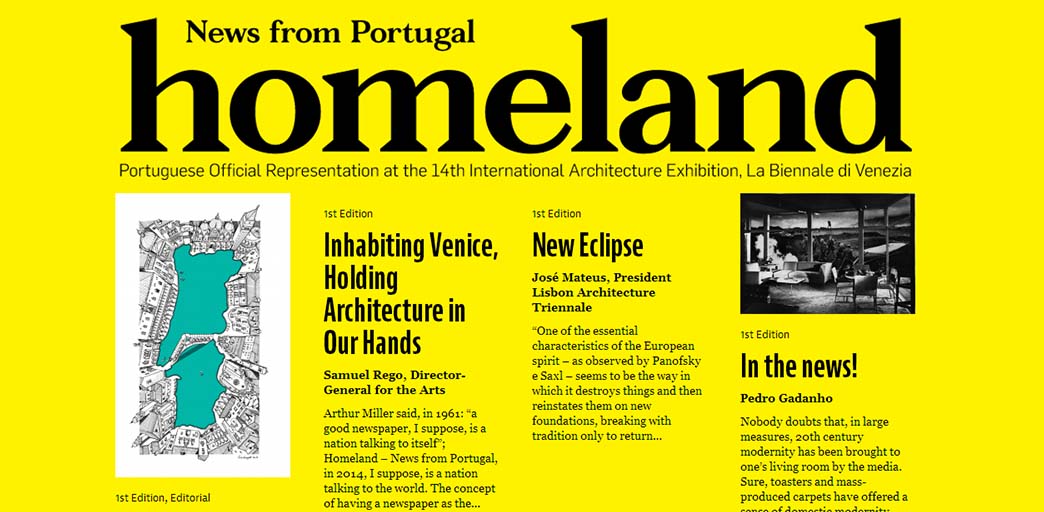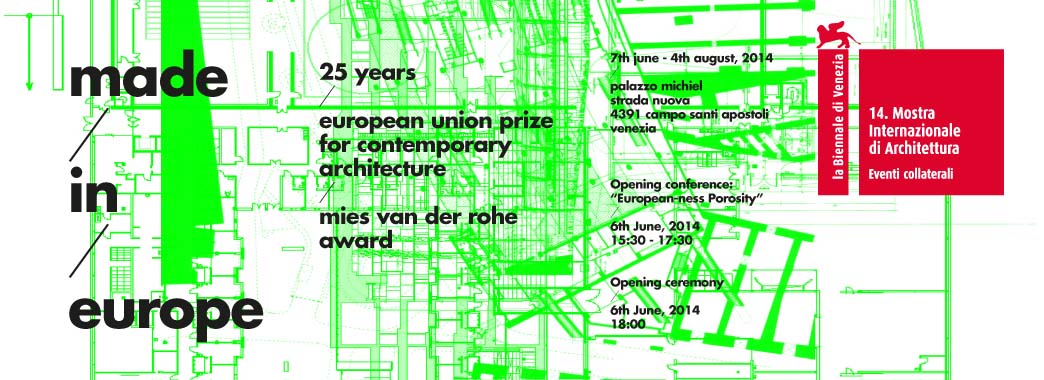2014 Venice Architecture Biennale is directed by the Dutch architect Rem Koolhaas, who has decided to run away from great architects and focus on great architecture. With this concept Koolhaas is trying to approach the history of culture and traditions of humans, fleeing from the mere exhibition of contemporary trends to open the space to research and critical reflection.
Having rejected many times the direction of the Exhibition, Koolhaas just established one condition to accept the position: the aim to teach how to read and write to a generation of architects under the command of market trends.
Under the title “Fundamentals” the Exhibition starts, unusually in June, 7th, instead of at the end of August and ends in November, 23 rd, which means that the space will remain open 3 months longer than usual.
Among the 65 nations present in Biennale 2014, we will find 11 countries which have not had any presence until this edition: Azerbaijan, Costa Rica, Dominican Republic, United Arab Emirates, Indonesia, Ivory Coast, Kenya, Morocco, Mozambique, New Zealand and Turkey. We will also have a special guest with the representation of an Antarctica Pavilion.
If you are planning to spend a Weekend in the Biennale di Venezia, check out our essential Top 10 guide to visit 2014 Venice Biennale.
1. Russian Pavilion
Under the motto “fair enough”, Russian pavilion is playing with the meaning of the term “fair” which means something “lawful” but also is the term to refer to an exhibition. The pavilion curators believe that latest exhibition of modernity is a commercial fair. Right after entering the pavilion hostess dressed in fuchsia welcome the visitor delivering a classical magazine-type catalogue and the show starts!
In a small space of just a few square meters, small fair shelves owned by imaginary companies offering updated solutions to old ideas, such as “Archipelago Tours” a supposed travel agency organizing visits to Russian modern architecture of a bread factory in Afghanistan, we can also find the Council for the Retroactive Development. All this scenarios are headed by figurants, such a Journalist-Architect who is trying to sell us his ideas.
2. United States Pavilion
On the other side of the path, and fleeing from spectacularity we find, the USA pavilion, which has been conceived as a huge library-office which is understood as a “global office where one can produce a new way of thinking and understanding how we are building our cities and territories nowadays, in a global context but understanding the local needs”. The curator in charge of this pavilion has been the Catalan Eva Franch, who established in USA 10 years ago. In between hundreds of shelves, we find documentation about 1000 projects by American architects build during the past 100 years.
3. Antarctica Pavilion
For the first time ever, the Biennale presents an Antarctica Pavilion, where participants explore the concept of cooperation as a way of surviving. Different countries need to work together to create structures to research and life in an extreme climate. Its curator Nadim Samman has selected works from architects around the world who have thought on structures to help develop the continent, always from the point of view of sustainability, biodiversity and environment. The promoters have already an eye towards the 2015 Antarctic Biennale, which will promote cultural exchange between artist and scientist.
4. Italian Pavilion
Italian Pavilion is as always one of the main meeting spaces as host country of the exhibition. This year under the motto Injerto / Implant leaded by architect Cino Zucchi, Italians try to perfectly fit their exhibition to the condition established by Koolhaas, developing a critical reflection of modernity and trying to reveal the process that has taken architecture to a homogenised and global aesthetic. They identify the strengths of a National Identity, and starting from Second World War they review their National Architecture History until today. Zuchi identifies “implants” or contributions of international aesthetics to the national way of thinking and analyses from this fact from a double point of view: a nostalgic interpretation and a positive point of view as this contribution has helped the evolution of Italian design.
5. Catalan pavilion
Inside a climate of political tension between Catalonia and Spain, Catalans participate for the second time in the Biennale with their own pavilion. On this occasion, under the title Grafting Architecture they recover their modernist history with the figure of Catalan architect Josep Maria Jujol, a Gaudi’s disciple, with fantastic drawings and models of the House Bufarull, a renovation of an old house where the architect worked for more than 20 years. With the master Jujol as the main element, Catalan architects present 16 works fitting the old and the new, such as the Tumul Transmiter Space / Megalitic Dolmen by Toni Gironès or Sant Franscesc church restoration by David Closes.
6. Slovenian Pavilion
Around the figure of the Slovene engineer Herman Potočnik Noordung, Slovenians think about the problem of Space Travel, from satellites to space stations, human “settlements” in the space have become part of our culture, and thus they habitation of space should be taken in consideration. Potočnik was one of the space designers pioneers having published the book “The problem of Space Travel” already in 1928 offering technical solutions to human survival. The architecture as an articulation of surroundings and as a creation of functional habitation in space becomes essential in this discussion.
7. Portugal “Pavilion”
Portugal has decided to create a media publication which will be the main element of their participation in the Biennale: a newspaper. Homeland, News from Portugal is how this report will be named and it will include news about current social, economic and of course architectural life in Portugal. Following Koolhaas’ Biennale Guidelines, Portugal will review 100 years of modernity from rural to urban environments trying to reveal how modernity has affected the culture of the country.
8. British Pavilion
British Council has been in charge of the Pavilion since 1938, and they are responsible for selecting the curators. This year, they have selected Dutch Architectural Historians Crimson and FAT Architecture to lead what will be their 76th Biennale. The proposal under the name Clockwork Jerusalem explores how the most traditional British sensibilities may be affected by international influences of modernism. According to curator Sam Jacob from FAT Architecture, the exhibition focuses on architecture as part of a gigantic process, looking for architecture not in terms of projects but as a part of a cultural context.
9. Korean Pavilion
Minsuk Cho is the curator of the Korean Pavilion which will open under the motto Crow’s Eye View: The Korean Peninsula, an exhibition about the architecture of the divided South and North Korea. According to Cho, after World War II when the Peninsula was divided, a millennium unified culture was split into two radically divergent economic, political and ideological systems. Architecture will be presented as a mechanism to generate alternative narratives to that situation which are capable to perceive both the monumental and the everyday in new ways.
10. Made in Europe Expo
The European Union Prize / Mies van der Rohe award promoters have been preparing during the past months an exhibition reviewing 25 years of history of the Price. The exhibition under the name Made in Europe opened last year for the first time in Barcelona including models and drawings from winner works over the last 25 years. This exhibition has been moved to different cities and in June it finally reached the Biennale di Venezia, where the curators want to emphasize the contribution of European architects to technological, societal and cultural and urban development.
If you are visiting Venice during the Biennale, don’t forget to check out our Venice Architecture tour guided by our local architect in Venice, Alvise Giacomazzi, managing director at AAG! Studio, starting the tour from his own architecture studio in Venice, Alvise will take you to the real Venice, as he says to discover that Venice is not only San Marco Square.
